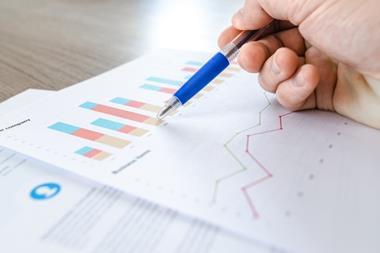Swedish pensions buffer fund AP2 has reported a total return of -6.2% for the first half of 2022, with listed asset classes being negatively affected during the period. However, the fund’s broad portfolio has mitigated the effect of turbulent markets, said Eva Halvarsson, the fund’s chief executive officer.
As the scheme pushlished its half year report this morning, it stated that the first six months of the year would “go down in history as very turbulent” regarding financial markets but also the real economy.
The result amounted to a loss of SEK27.3bn (€2.5bn) and the fund capital amounted to SEK411.7bn at the end of the first half of 2022. During the period, SEK2bn has been transferred to the pension system, the report disclosed.
Russia’s invasion of Ukraine is primarily a humanitarian disaster, but has also affected energy, food and commodity prices. Inflation has risen to levels not seen in decades and central banks have tightened much more than previously expected.
This has resulted in both shares and bonds having a strongly negative return during the six months, the scheme stated.
The fund’s total return amounted to -6.2% compared to OMX Stockholm, which during the same period went down by around 28% and global indexes such as MSCI World (excl. currency effects) went down by around 18%, Halvarsson explained.

“It is positive that our alternative investments, which include unlisted real estate, venture capital funds and sustainable infrastructure, returned a whopping 10% in these turbulent times,” she added.
Since its inception, AP2’s return has exceeded the fund’s long-term return assumption. Over the past 10 years, the fund’s average return has been 8.2%.
Sustainability
AP2 has also a separate half-yearly report on its sustainability path, which reports on the fund’s four focus areas within sustainability: climate, ownership governance, diversity and human rights. The report also contains a section on the fund’s work on impact.
“An area with great investment needs is sustainable infrastructure, as a rapid transition is required by energy and transport systems, from fossil-based to renewables,” Halvarsson said, adding that this year the fund has further expanded its allocation to sustainable infrastructure.
“We have completed a total of seven investments, the most recent of which in the first half of 2022,” she said.
“Furthermore, the fund believes that sustainable forestry is important to reach net zero emissions and has therefore decided to define criteria that an investment in forest properties must meet in order to be defined as a climate investment,” she continued.
“During the past year, we have evaluated how we can understand and measure the ‘impact’ of our investments – the impact that the investments have on the environment and people.
”During the spring, we carried out an analysis of the entire listed portfolio based on the impact on the UN’s sustainability goals. Our ambition is to be able to improve our identification and management of impact risks and opportunities,” Halvarsson said.
Read the digital edition of IPE’s latest magazine

































No comments yet